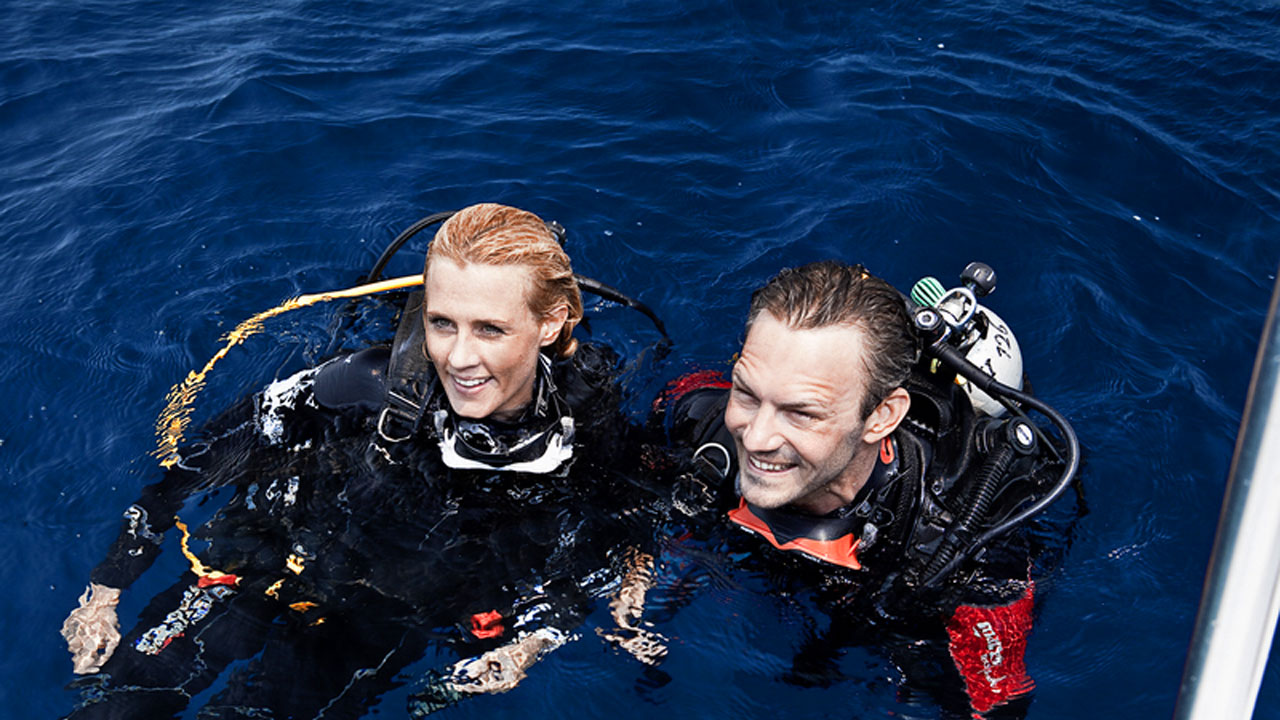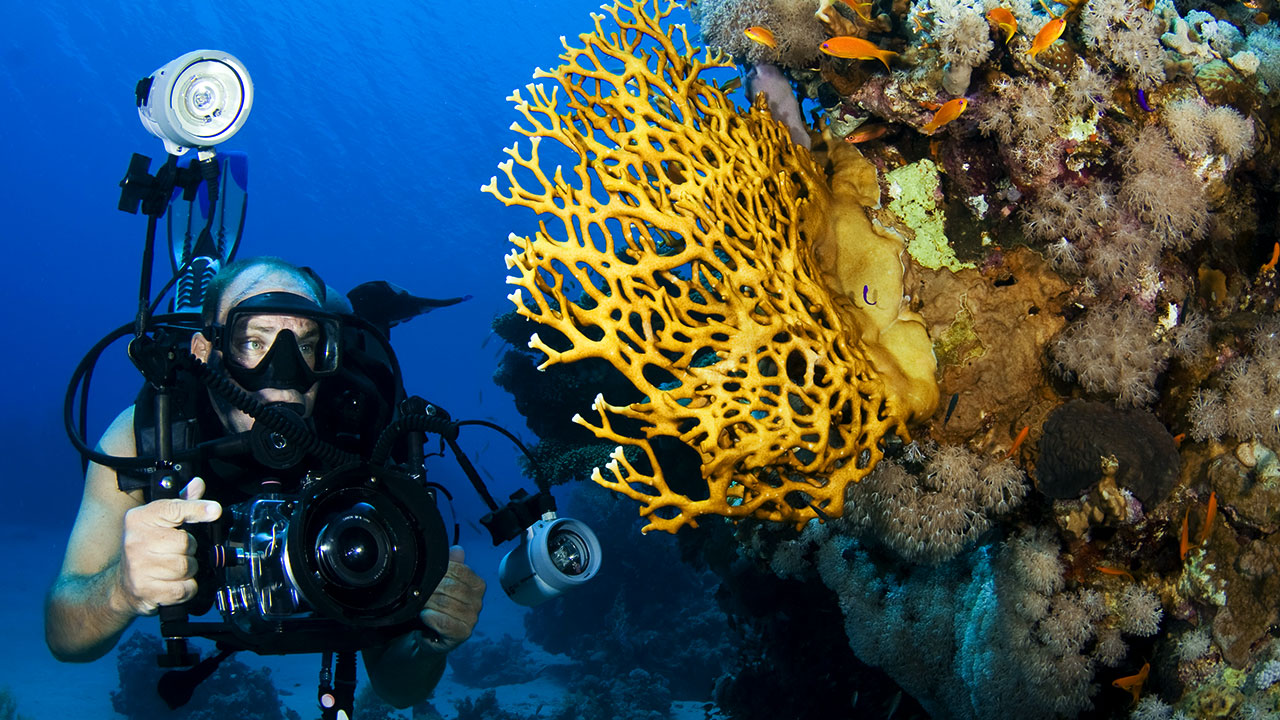Ear Equalization Basics: Why and How

Ear clearing is an essential skill for both scuba and freediving, yet it is also one of the most common issues divers have. An estimated 25% of all divers consistently find themselves struggling to equalize. Contrary to the popular belief, in most cases, it is the technique that causes trouble, not the anatomy or illness. In a very few individuals allergies, chronic infection or nasal polyps may play a role.
So, before we proceed to discuss the tips for easier ear clearing, let’s briefly recall some basic dive physiology. Your middle ears are dead air spaces, connected to the outer world by the Eustachian tubes running to the back of your throat (see the illustration below). As you descend on the dive, the ambient pressure exceeds the pressure in your middle ear. If left unattended, the growing pressure may cause discomfort, pain and even damage to the delicate mechanisms of the ear. In order to prevent this, you need to open the normally closed Eustachian tubes, allowing higher-pressure air from your throat to enter your middle ears. That’s the essence of equalizing.

As it was mentioned above, the underlying factor behind ear clearing struggles is often an ill-suited technique. Most divers are taught to use the Valsalva Maneuver (pinch and blow), and while some find it easy to master, others respond better to different methods. Here are a few alternative techniques you can try.
Toynbee - pinch your nose and swallow at the same time
This is one of the most natural and easy to try methods. Swallowing is actually how we equalize our ears many times a day without even realizing it. When you pinch and swallow the muscles in the throat and soft palate tense and start pulling the tubes open, while your tongue compresses air against them.
Frenzel - pinch your nose, press your tongue against the back of your throat and try making a "K" or "ng" sound
This method helps to contract your throat muscles to open the tubes and compress the air against them with the tongue.
Lowry - combine Valsalva and Toynbee
To perform the Lowry method you need to pinch your nose, blow against it and swallow at the same time. This may sound tricky, but it’s a great technique to help you feel how your muscles work.
Edmonds - pinch your nose, blow and push your jaw forward
This technique helps to stretch the muscles surrounding the Eustachian tubes and pull them open.
Voluntary tubal opening - tense your throat and push your jaw forward
Voluntary tubal opening technique feels a lot like yawning with your mouth closed. Tensing and stretching the muscles pulls the eustachian tubes open. This requires a lot of practice, but some divers get so good at this technique that they can hold their tubes open for continuous equalization.
In addition to trying different equalization techniques, there a few more things you can do to help the process along.
- Descend feet first. The slight pressure difference between the air in your lungs and the air in your ears will help you equalize.
- Go slowly and use a descent line. This will help you to control your descent rate more accurately and stop quickly if you feel pressure.
- Equalize often. Don’t wait until you feel pressure or pain, try maintaining a slight positive pressure in your middle ears instead.
- Look up or tilt your head from side to side. Extending your neck may help to open your Eustachian tubes.
- Stop immediately if you feel pain. Ascend a few feet and try equalizing again.
- Stay hydrated. Drink enough water before the dive, as dehydration can cause the mucus in your nasal passages to become thicker, making it more likely to block the eustachian tubes.
But what if you have tried everything aforementioned and still can't get your ears open? Chances are there is a problem that literally blocks the way. Here are a few factors that can make it difficult to equalize.
1. Age. Because children have small, flat Eustachian tubes, they may find it difficult or impossible to equalize. The problem will disappear as the kids mature and their Eustachian tubes open fully.
2. Illness. Congestion and inflammation of the upper respiratory tract may block the Eustachian tubes and prevent ear clearing. Ear infections can also cause issues with equalization. The best advice, in this case, is simply postpone your dive.
3. Deviated septum. While the displacement of the nasal septum is not a contraindication to diving, it can inhibit proper airflow to the Eustachian tubes. Individuals with a deviated septum may try using decongestants or, in more severe cases, having a surgical correction.
Reverse Block
Normally, as the diver ascends, the water pressure decreases and the extra air pressure leaks out the Eustachian tube automatically, so there is no need to clear the ears manually. However, in case you are congested or your Eustachian tube is inflamed, a reverse block may happen. The reverse block is caused by too much air pressure in the middle ear, which leads to the eardrum bending outwards. As a result, you will experience discomfort or pain in the ears. Remember, attempting to perform a Valsalva Maneuver or similar equalization technique will only make the problem worse since it will add even more pressure to the already over-full middle ear.
In order to mitigate the problem, you should descend a few feet and try wiggling your jaw to release the pressure. You can also try performing the Toynbee Maneuver. Pinch your nose closed and swallow, this will create negative pressure and help to suck the extra air pressure out of the middle ear.
Photo Credit
Denys Rylov | http://dengc.photos/




